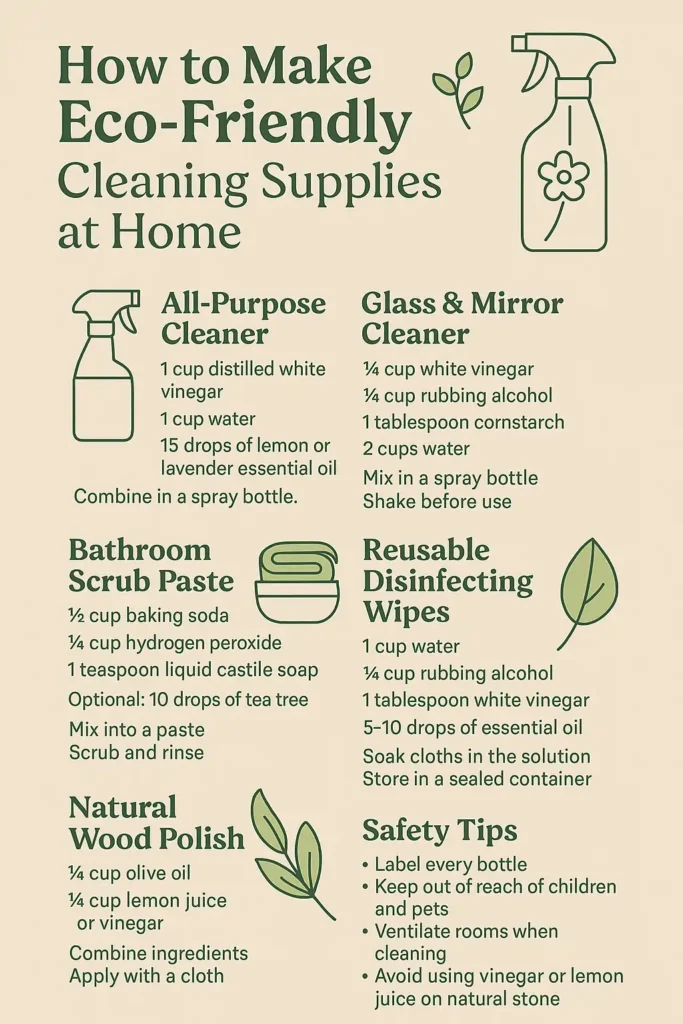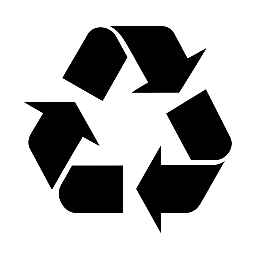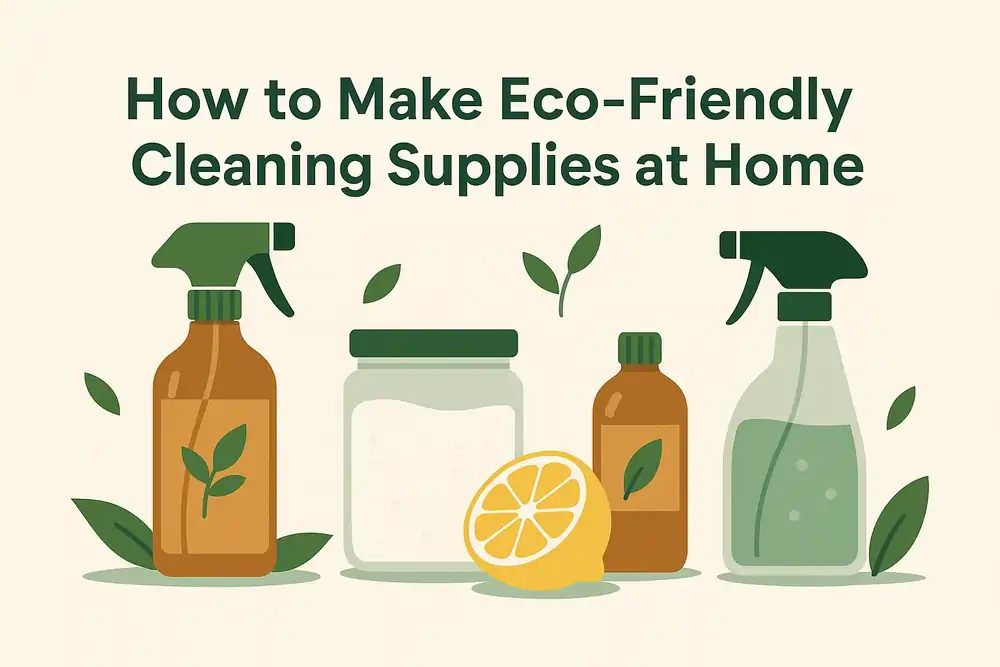In a world increasingly focused on sustainability, one of the simplest ways to reduce your environmental footprint is by swapping out chemical-laden cleaning products for eco-friendly, homemade alternatives. These natural cleaners are not only safer for your home and health but also cost-effective and incredibly easy to make using ingredients you likely already have in your pantry.
This guide explores how to make eco-friendly cleaning supplies at home—with clear recipes, explanations of ingredients, safety tips, and practical advice for every room in your house.
🌿 Why Go Green with Cleaning?
Traditional household cleaners often contain harsh chemicals like ammonia, bleach, and synthetic fragrances. These substances can:
- Irritate your skin, lungs, and eyes
- Trigger allergies and asthma
- Harm aquatic life when washed down the drain
- Create unnecessary plastic waste and air pollution
Eco-friendly cleaners, in contrast, rely on natural ingredients like vinegar, baking soda, lemon juice, and essential oils that are:
- Non-toxic
- Biodegradable
- Gentle on sensitive skin and pets
- Just as effective—if not more—when used properly
🧪 The Essential Green Cleaning Ingredients
Before we dive into recipes, it helps to understand the superstar ingredients used in homemade cleaners:
| Ingredient | What It Does |
|---|---|
| White Vinegar | Cuts grease, dissolves mineral deposits, disinfects |
| Baking Soda | Deodorizes, scrubs, softens water |
| Castile Soap | Gentle natural soap for all-purpose use |
| Hydrogen Peroxide | Disinfects surfaces and removes stains |
| Lemon Juice | Natural bleach, degreaser, and fragrance booster |
| Essential Oils | Antibacterial properties + scent (e.g., tea tree, lemon, lavender) |
| Rubbing Alcohol | Evaporates quickly, disinfects, cuts oils |
| Cornstarch | Helps polish glass and absorb grease |
🧼 1. All-Purpose Cleaner (Everyday Surfaces)
Use on: countertops, stovetops, tiles, and glass
Ingredients:
- 1 cup distilled white vinegar
- 1 cup water
- 15 drops of lemon or lavender essential oil
Instructions:
- Combine all ingredients in a spray bottle.
- Shake well before each use.
- Spray onto surface and wipe with a microfiber cloth.
🛑 Avoid using on granite, marble, or other natural stone—vinegar can dull their finish.
🪞 2. Streak-Free Glass & Mirror Cleaner
Use on: mirrors, windows, chrome fixtures
Ingredients:
- ¼ cup white vinegar
- ¼ cup rubbing alcohol (70% or higher)
- 1 tablespoon cornstarch
- 2 cups water
Instructions:
- Mix in a spray bottle and shake thoroughly (cornstarch may settle).
- Spray lightly and wipe with newspaper or lint-free cloth for a brilliant shine.
💡 Cornstarch absorbs oils and polishes glass better than vinegar alone.
🚿 3. Bathroom Scrub Paste
Use on: tubs, sinks, tiles, toilet bowls
Ingredients:
- ½ cup baking soda
- ¼ cup hydrogen peroxide
- 1 teaspoon liquid castile soap
- (Optional) 10 drops tea tree oil for extra germ-fighting power
Instructions:
- Mix into a thick paste in a bowl or container.
- Apply to surface with sponge or brush.
- Let sit for 5–10 minutes, scrub, then rinse clean.
✨ This combo breaks down soap scum, mildew, and stains—without toxic fumes.
🧽 4. Reusable Disinfecting Wipes
Use on: doorknobs, electronics, remotes, fridge handles
Ingredients:
- 1 cup water
- ¼ cup rubbing alcohol
- 1 tablespoon white vinegar
- 5–10 drops of essential oil (eucalyptus, lemon, or lavender)
- Clean cotton cloths or old T-shirt squares
Instructions:
- Mix liquids in a container with a tight lid.
- Submerge cloths so they’re fully saturated.
- Store sealed; wring out before use.
♻️ Toss them in the laundry, re-soak, and reuse—no more single-use wipes!
🧴 5. Natural Wood Polish
Use on: furniture, wood countertops, cutting boards
Ingredients:
- ¼ cup olive oil
- ¼ cup lemon juice (or white vinegar for more cleaning power)
Instructions:
- Shake to mix before each use.
- Apply with a soft cloth and buff for a clean, nourished finish.
🪵 Olive oil conditions wood, and lemon cuts grime without harsh wax.
🧼 Bonus: DIY Toilet Bowl Bombs
Fun + effective fizzing cleaner
Ingredients:
- 1 cup baking soda
- ¼ cup citric acid
- 1 tablespoon castile soap
- A few drops of essential oil (peppermint or eucalyptus)
Instructions:
- Mix dry ingredients first, then slowly stir in soap.
- Pack mixture into silicone molds; let dry 24 hours.
- Drop 1 into the toilet bowl, let fizz, then scrub as needed.
🧠 Safety Tips & Eco Wisdom
- Label every bottle: Vinegar and hydrogen peroxide look alike—clearly label to avoid misuse.
- Store wisely: Keep all mixtures out of reach of kids and pets, even if non-toxic.
- Ventilate rooms: Natural doesn’t always mean scent-free—open a window when using essential oils.
- Never mix vinegar and hydrogen peroxide in the same bottle: It can create peracetic acid, a potential irritant.
- Avoid using vinegar or lemon juice on natural stone: Use diluted castile soap instead.
🌎 The Bigger Impact
By making your own cleaners, you’re not just saving money—you’re:
- Reducing single-use plastic bottles
- Keeping harmful chemicals out of waterways
- Creating a healthier home environment
- Supporting a circular lifestyle
Even if you start with just one of these recipes, you’re already making a planet-friendly choice that benefits you, your loved ones, and the Earth.

Final Thoughts
Eco-friendly cleaning doesn’t require a chemistry degree or fancy ingredients. With just a few kitchen staples and simple know-how, you can transform your cleaning routine into something effective, affordable, and sustainable.
Your home will sparkle—and so will your conscience.


Leave a Reply